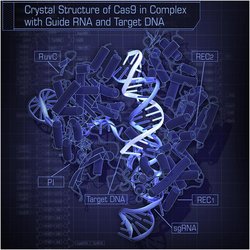Methods & Technologies
The CRISPR/Cas9 technology
The CRISPR/ Cas9 system was originally described as an adaptive defense mechanism in bacteria. In this context, the function is to recognize genetic material from virus, cutting these DNA sequences at specific locations, and consequently neutralizing the invading pathogen. The potential of using CRISPR in genetic engineering of human cells was initially proposed in 2012. It sparked an immense interest in the field and within a few years thousands of publications emerged from research groups globally.
The feasibility of gene correction and genetic engineering, using the CRISPR/ Cas9 technology, has been demonstrated by several research groups, including that of Rasmus O. Bak and his colleagues at Stanford University. I their recent pre-clinical study, they corrected an inherited genetic mutation in hematopoietic stem cells of a patient suffering from non-functioning hemoglobin production in red blood cells.
This video introduces the CRISPR/Cas9 technology (MIT)
The use of stem cells
Congenital immune defects cause some of the most severe genetic diseases, often with fatal consequences within the first years of life due to the inability to fight off simple infections. Since several of these diseases are caused by a mutation in a single gene, a genetic correction of the affected gene in the patient's own hematopoietic stem cells will result in the production of a new and functioning immune system, thus replacing the malfunctioning one. In line with this, the scope of the PASCAL-MID research center is to collect and correct the genetic mutations in patient-derived stem cells, using the molecular scissors comprised by CRISPR/Cas9. By intricate design, these scissors are guided towards the defective gene sequence exclusively, resulting in very precise gene correction. At Aarhus University Hospital, treatment of patients with their own or donor-derived stem cells have been implemented for more than 25 years as a part of therapeutic regimens for hematological diseases. This has been a key point in the work of Professor Peter Hokland, and the research center will apply this expertise to enable genetic correction of the patients' own stem cells.
Sequencing of the genome
As a central point, correct diagnoses and characterization of congenital immune defects rely on a genetic investigation, both prior to and after the CRISPR/ Cas9 gene editing and the stem cell treatment. A genome analysis is facilitated by state-of-the-art sequencing of the patients' DNA, followed by complex data analysis.
